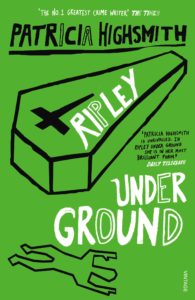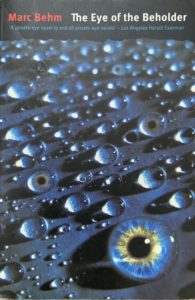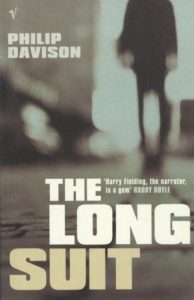Decades: Compiling the Ultimate Library with Paul Gadsby
Welcome to March 2022, we are now in the fifteenth month of the Decades Library. Decades is a feature which I expected to run for five or six posts back in January and February 2021 and then believed it would slip into the background maybe to be revisited for another brief outing later in the year.
What actually happened is that Decades became a weekly feature and over 200 books have been recommended by authors, bloggers, journalists and publishers. People look foward to seeing the latest reading recommendations from my guests each week and if I don’t share a new Decades post on a Friday morning then I get letters (OK I get Twitter DMs but the principle is the same).
I also have to find new ways to introduce the Decades Library each week…how I wish I had standardised my introduction.
The Decades Library is my quest to populate a brand new library from the ground up. I started with zero books and I invite guests to nominate five of their favourite reads to be added to the shelves of the Decades Library. I only want the best books to be represented, books someone loved and would love other people to enjoy too.
Why the Decades Library? Well although my guests get to choose five favourite books they can only select one book per decade from five consecutive decades.
This week I am delighted to welcome another indy published author to the Decades Library: Paul Gadsby. I have had a sneaky look at the books Paul has selected and damn they sound good. So it’s enough from me for the moment, let me hand you over to Paul.
 Paul Gadsby is the author of the crime novels ‘Back Door to Hell’ and ‘Turbulence’, both published by Fahrenheit Press, as well as ‘Chasing the Game’. His short stories have appeared in Mystery Tribune, Rock and a Hard Place magazine, Beat to a Pulp, Close to the Bone, and the ‘Noirville’ anthology. Having spent many years working in London as a sports and trade journalist, he is now a copywriter (when he’s not writing fiction) in his native Northamptonshire, where he lives with his wife and young son. His love of reading started with Michael Hardcastle’s football books for children and Sue Townsend’s Adrian Mole series, before discovering a passion for crime and noir novels through the works of Ian Rankin, Ted Lewis, Megan Abbott and James Sallis among many others. You can read more about Paul’s work and his articles on literature at his website, paulgadsbyauthor.co.uk, while he can be found on Twitter @PaulJGadsby
Paul Gadsby is the author of the crime novels ‘Back Door to Hell’ and ‘Turbulence’, both published by Fahrenheit Press, as well as ‘Chasing the Game’. His short stories have appeared in Mystery Tribune, Rock and a Hard Place magazine, Beat to a Pulp, Close to the Bone, and the ‘Noirville’ anthology. Having spent many years working in London as a sports and trade journalist, he is now a copywriter (when he’s not writing fiction) in his native Northamptonshire, where he lives with his wife and young son. His love of reading started with Michael Hardcastle’s football books for children and Sue Townsend’s Adrian Mole series, before discovering a passion for crime and noir novels through the works of Ian Rankin, Ted Lewis, Megan Abbott and James Sallis among many others. You can read more about Paul’s work and his articles on literature at his website, paulgadsbyauthor.co.uk, while he can be found on Twitter @PaulJGadsby
DECADES
 Ripley Under Ground, by Patricia Highsmith (1970)
Ripley Under Ground, by Patricia Highsmith (1970)
I often tend to prefer the first book in a series, but this is a fine example of a stunning follow-up. Highsmith’s collection of Tom Ripley psychological thrillers begins with the spellbinding ‘The Talented Mr Ripley’, and ‘Ripley Under Ground’ is the second instalment, set six years later. The titular anti-hero, now in his thirties, is enjoying an affluent lifestyle in rural France, supported by his heiress wife, Héloïse, and the fortune he furtively acquired from Dickie Greenleaf. Naturally drawn to the shadows and all things clandestine, Ripley is also running an art forgery scheme, playing a key sales role within a consortium that is producing and selling fake paintings lauded as works by the now deceased artist Philip Derwatt. But when Bernard Tufts, a gifted young painter who is fabricating the works and who idolised Derwatt, becomes tormented by guilt, the scheme unravels. Ripley is forced to act fast — and not to mention lethally — in order to save his skin and the elevated social status he’s worked so hard to create for himself. Slotting Ripley into a counterfeiting world where, as a natural imitator and con artist, he thrives so compellingly was a masterstroke by Highsmith as she deftly plots this riveting tale.
 The Eye of the Beholder, by Marc Behm (1980)
The Eye of the Beholder, by Marc Behm (1980)
This hardboiled and surreal PI novel, later adapted into a film starring Ewan McGregor and Ashley Judd, is an eclectic and experimental triumph. The protagonist, known only as ‘The Eye’, is a field operative for a corporate private investigation firm in Virginia. His latest assignment is to keep tabs on college graduate Paul Hugo, whose wealthy parents are concerned about a deviant young woman their son is romantically involved with. The Eye, long separated from his daughter who he only sees in sporadic illusions, is mentally unstable and finds himself fixated with the woman. When he watches her calmly kill Paul one evening, The Eye becomes infatuated. He soon discovers that the woman has plenty of aliases and wigs as she criss-crosses the nation getting her hooks into one well-heeled victim after another – sometimes playing the bride for an inheritance payout, sometimes just helping herself to a quick score. The Eye researches her true identity, Joanna Eris, and uncovers a tragic past that explains her emotional detachment to the murders she carries out with such a callous flair. Despite being a slender book, ‘The Eye of the Beholder’ spans 30 years and covers nearly 100 killings. It’s an extraordinary nihilistic descent into hell; brutal yet tender, rapid yet epic, and viciously bleak. Few books have explored themes of manic desire and sociopathic behaviour with such heartbreaking lyricism and relentless intensity.
 The Hackman Blues, by Ken Bruen (1997)
The Hackman Blues, by Ken Bruen (1997)
I love the verve and vengeance which Irish noir novelist Bruen injects into his prose. Creator of the Jack Taylor series, Bruen’s long-nurtured edgy writing style and black humour lends itself particularly well to his standalone books, with ‘The Hackman Blues’ a personal favourite. Brady, a gay, bipolar junkie, is tasked with finding a girl in Brixton but his objective is complicated by a lethal ex-con and an Irish builder obsessed with Hollywood legend Gene Hackman. A powerful, gritty tale laced with urban blues and psychotic yet genuine characters, this is Bruen at his haunted best. Like most of his novels, the intensity rarely dips with his chapters short, his sentences rapid, and his narratives wonderfully original. Also, his habit of defining his protagonists by their cultural tastes — often declared through listing their favourite music, films, books, clothes or cuisine — wins me over every time.
 The Long Suit, by Philip Davison (2003)
The Long Suit, by Philip Davison (2003)
Following a chequered recent past, MI5 operative Harry Fielding is brought in from the cold to investigate the mysterious and complex case of a bullet-ridden corpse found on a Long Island golf course. Never one to fit in with the stiff procedures and hierarchical posturing of the British secret service, Harry struggles with the mental imbalance of returning to the cloak-and-dagger world of intelligence work that he hates so much yet performs so well. Keeping his troublemaker apprentice Johnny in check is difficult enough, let alone interpreting the instructions from head office which don’t appear to make the purpose of his job any clearer. Harry must consider if he is being set up, and to what end. Aside from the intriguing story and Davison’s delightfully polished writing style, what sets this book apart is the vivid and touching interplay that takes place in the visits Harry makes to his ailing father, Cecil, now confined to a retirement home as his amnesia worsens. The unsaid becomes mightily powerful in these passages. When I first read this book, having come across it by accident rather than design, I was captivated by its sharp and intelligent prose; the depth and vision of Davison’s writing compares with the likes of Graham Greene, John le Carré and James Sallis. The character of Harry features in some of Davison’s other books, but this for me is his finest work.
 Dodgers, by Bill Beverly (2016)
Dodgers, by Bill Beverly (2016)
This debut novel seemed to come out of nowhere and blew me — and many others — away. With its slick writing, gripping story and well-drawn characters, the convincing world created in this book overpowers you and stays with you long after the final page. We follow the journey of 15-year-old LA ghetto soldier East in what is both a crime caper road trip and a coming-of-age saga. East works for a drug peddling crew, just like pretty much everyone else he knows on the streets of the bleak African-American suburban landscape he has been raised, where the prospect of a violent death is constant. The crew’s boss, Fin, needs a Wisconsin-based witness killed before the guy can testify against his nephew in an upcoming trial. Fin tasks East, his trigger-happy 13-year-old half-brother Ty, and two other young crew members – the overweight Walter and the cocky Michael – with travelling across America to carry out the hit. Things don’t go to plan. The four of them have to improvise under pressure as things fall apart amidst a backdrop of the Midwest heartland rusting to a slow death. The van is vandalised and spray-painted with a racial slur. The mission flips. East and Michael have a vicious punch-up, and the group splits in stages. These impoverished characters don’t have many choices at their disposal, if any. The plot is taut and tense; there is no need for coincidences or twists. The observations Beverly draws are insightful and relevant, while the images he paints in your mind feel startlingly real.
And there we go, five books which sound amazing and I have only read one of them this week (Dodgers, don’t you know?). Thanks to Paul for taking the time to make his choices, it is always very much appreciated when someone takes on the Curator’s Hat for the Decades Library and I know people look forward to finding new books each week.
DECADES WILL RETURN